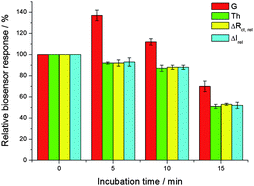Complex electrochemical and impedimetric evaluation of DNA damage by using DNA biosensor based on a carbon screen-printed electrode†
Abstract
DNA biosensor (DNA/SWCNT-COOH-CHIT/SPCE) composed of dsDNA adsorptive layer on a carboxylated

- This article is part of the themed collection: Future Electroanalytical Developments

 Please wait while we load your content...
Please wait while we load your content...